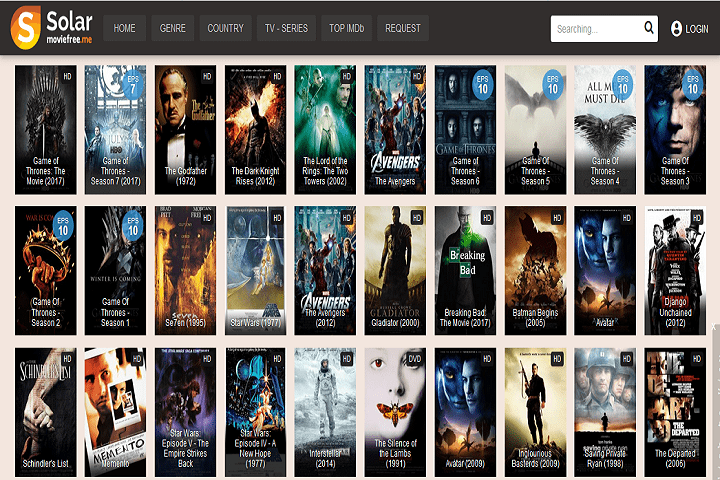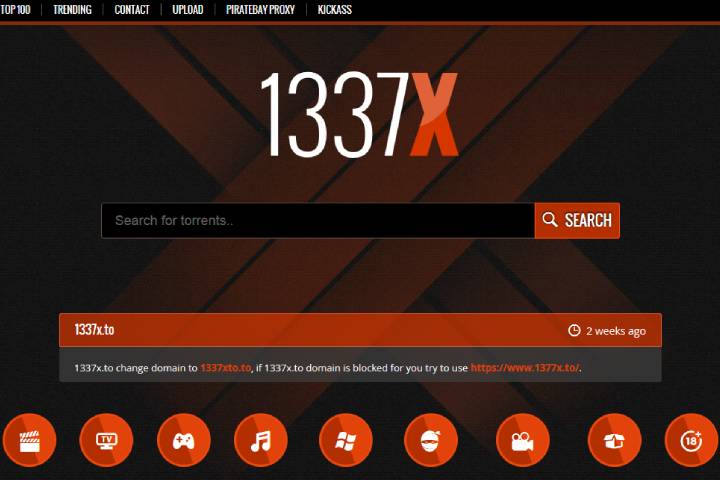Cybersecurity
The Dangers of Hacking and What a Hacker Can Do to Your Website
Small business owners who are just starting with their web application might think, “My business is too small for any hacker to be interested in my website.

Small business owners who are just starting with their web application might think, “My business is too small for any hacker to be interested in my website. There’s bigger fish in the sea.”
However, that is exactly where small enterprises fall into the malicious hacker’s trap. Unfortunately, hackers tend to target small websites and businesses specifically because of their lack of security. We all know the kind of destruction that they can wreak once they are in.
If you are one such small business owner who never really paid much attention to your website’s security, then this post is for you. Let’s explore some of the terrible things a hacker can do to your website and why cybersecurity is important.
Table of Contents
1. Steal Your Sensitive Information
The biggest risk to your website with a hacker is causing a breach in your data and information. You might own a small website, but your website still collects dozens of private information from users. Personal information, bank details, payment records, and credit card credentials are all things your website would have collected over the days. All of this information is a literal gold mine for hackers. They can sell it on the dark market and rake in money.
2. Leak Your Intellectual Property
No matter how irrelevant you think your website is, your website would ultimately hold several intellectual property items. Websites usually possess confidential company data and information, leads on sales, and information on customers and vendors. Hackers can cause a breach in your intellectual property, which could eventually lead to a loss in business and even financial ruin.

Not only will your customers be exposed, but your reputation will be damaged, and you will lose the competitive edge that you once had. To top it all off, a breach in security for intellectual property on your website might even lead to hefty fines. At worst, it can even leave you tangled up in lawsuits for years to come.
3. Hold Your Website Ransom
If you think that you do not have any sensitive information or intellectual property on your website, which is why you might not be a likely target for hackers, then you might want to think again. Hackers are probably some of the cleverest people on this planet. They know every possible way in which they can make money off of your website.
If they can’t steal your data or intellectual property, then they might resort to stealing all of your content and holding it for a ransom. And without your content, where would you be? You would eventually make a huge dent in your finances by just buying everything on your website back from your hacker.
4. Add Dangerous Items To Your Website
Hackers can lay waste to your website by adding dangerous items, with you being none the wiser. For instance, hackers might add links to their websites to increase traffic, and they might do so by linking your content to their websites or adding some popups for your customers. This might not be so dangerous, you might think, but having a website compromised in this manner is even more foreboding.
This is because a hacker can also use your website as a host to start a malware campaign by adding crypto mining or ransomware to your website. Your web server will then become the source from which other organizations will be hacked. The hacker can add malware to hack into the various devices used to visit your website. This way, pretty much everyone and everything involved with your website are at risk.
5. Generate Spam And Send Messages
Once hacked into your website, all of your client data is now open to your hackers. They can then use all of this information to generate spam messages and emails that go out to all of your clients. Some hackers might even use your website to send other kinds of messages. It is not unique for a hacker to send across a political statement through a hacked website.

6. To Conduct Phishing Attacks
Vulnerable website applications are the prime targets of hackers who wish to implement phishing attacks. All they need to do is insert a code into your application to redirect your visitors to malicious pages and phishing sites. After this, you are extracting bank details, and payment information is a piece of cake.
The most critical part of all of this is that even if you are found to be innocent in this phishing scam, you might still be legally held responsible for the damage caused to your customers.
7. Conduct Illegal Distribution Of Content
Last but not least, hackers might be using your website to distribute illegal content on the internet. Unfortunately, this might leave you to face grave legal consequences if the authorities ever catch your website. What’s more, website hackers also try to abuse your bandwidth while distributing their content on the web.
8. Wrapping up
When it comes to website security, nothing holds truer than the old saying – “better safe than sorry!” Never think that you or your website are safe from hackers. Treat anything and everything you own on the internet with suspicion, and establish security protocols to protect yourself and your website visitors.
Blockchain
Perché Dobbiamo Utilizzare Un’Applicazione Antivirus Su Android?
Perché Dobbiamo Utilizzare Un’applicazione Antivirus Su Android? Rischi diversi, Vantaggi dell’utilizzo di applicazioni antivirus su Android

Una soluzione altrettanto fondamentale per garantire che il tuo dispositivo non venga infettato da questi programmi software malevoli (virus, trojan, adware, spyware) è il programma antivirus. Di conseguenza, il codice rileva e respinge anche l’app che può essere sviluppata in modo inefficiente dagli hacker. L’altra virtù è che può anche aiutare la tua macchina a essere sotto tiro e prevenire altri attacchi informatici da attacchi di phishing.
1. Rischi diversi
Android, essendo il sistema operativo mobile più utilizzato a livello globale, è diventato un obiettivo primario per i criminali informatici. Dal malware e ransomware agli attacchi di phishing e al furto di identità, le minacce sono diverse e in continua evoluzione. A differenza dei computer tradizionali, i dispositivi mobili spesso non dispongono delle solide misure di sicurezza inerenti ai sistemi operativi desktop, rendendoli suscettibili di sfruttamento.
a. Minaccia malware
Il malware, abbreviazione di software dannoso, comprende un ampio spettro di minacce progettate per infiltrarsi, interrompere o danneggiare un dispositivo o una rete. Nel regno di Android, i malware possono mascherarsi da applicazioni legittime, nascondersi negli app store o mascherarsi da download innocui dal web. Una volta installato, il malware può provocare danni rubando informazioni sensibili, spiando le attività degli utenti o addirittura rendendo il dispositivo inutilizzabile.
b. Insidie del phishing
Gli attacchi di phishing, un’altra minaccia diffusa, mirano a indurre gli utenti a divulgare informazioni personali come password, numeri di carta di credito o credenziali di accesso. Questi attacchi spesso utilizzano tattiche di ingegneria sociale, sfruttando siti Web, e-mail o messaggi falsi per ingannare le vittime ignare. Con la comodità di accedere alla posta elettronica e navigare sul Web sui nostri dispositivi Android, il rischio di cadere preda di truffe di phishing diventa sempre presente.
2. Vantaggi dell’utilizzo di applicazioni antivirus su Android
a. Il ruolo delle applicazioni antivirus
Le applicazione antivirus gratuita per Android si rivelano indispensabili guardiani della nostra sicurezza digitale di fronte a queste minacce incombenti. Queste soluzioni software sono progettate specificamente per rilevare, prevenire ed eliminare programmi dannosi, rafforzando così le difese dei nostri dispositivi Android.
b. Protezione in tempo reale
Le applicazioni antivirus utilizzano algoritmi sofisticati e analisi euristiche per identificare e neutralizzare proattivamente le minacce in tempo reale. Monitorando continuamente le attività del dispositivo e i flussi di dati in entrata, questi strumenti fungono da sentinelle vigili, intercettando il malware prima che possa infiltrarsi nel sistema.

c. Scansione completa
Una delle funzioni principali delle applicazioni antivirus è l’esecuzione di scansioni complete della memoria, delle applicazioni e dei file del dispositivo. Attraverso tecniche di scansione approfondita, questi strumenti ispezionano meticolosamente ogni angolo del dispositivo, eliminando ogni traccia di malware o attività sospette. Eseguendo scansioni regolari, gli utenti possono garantire che i loro dispositivi Android rimangano liberi da minacce nascoste.
d. protezione della rete
In un’era in cui la navigazione sul Web è diventata parte integrante della nostra vita quotidiana, le applicazioni antivirus estendono il loro ombrello protettivo per comprendere le attività online. Integrando funzionalità di protezione Web, questi strumenti possono rilevare e bloccare siti Web dannosi, tentativi di phishing e altre minacce online in tempo reale. Che si tratti di fare acquisti, operazioni bancarie o semplicemente navigare sul Web alla ricerca di informazioni, gli utenti possono navigare nel panorama digitale con sicurezza, sapendo che la loro applicazione antivirus è al loro fianco.
e. Misure antifurto
Oltre a combattere malware e minacce online, molte applicazioni antivirus offrono funzionalità aggiuntive come funzionalità antifurto e generatore di password sicuro. In caso di smarrimento o furto del dispositivo, questi strumenti consentono agli utenti di localizzare, bloccare o cancellare da remoto il proprio dispositivo Android, proteggendo i dati sensibili dalla caduta nelle mani sbagliate. Grazie alla possibilità di tracciare la posizione del dispositivo o attivare un allarme da remoto, gli utenti possono mitigare le potenziali conseguenze del furto o dello smarrimento del dispositivo.
f. Reputazione e affidabilità
Quando si valutano le applicazioni antivirus, è essenziale considerare la reputazione e il track record dello sviluppatore del software. Scegli marchi affermati con una comprovata storia nella fornitura di soluzioni di sicurezza affidabili e aggiornamenti tempestivi. Leggere recensioni e testimonianze di altri utenti può fornire preziose informazioni sull’efficacia e sulle prestazioni dell’applicazione antivirus.
g. Impatto sulle prestazioni
Sebbene le applicazioni antivirus svolgano un ruolo cruciale nella protezione del tuo dispositivo Android, non dovrebbero andare a scapito delle prestazioni o della durata della batteria. Scegli soluzioni leggere e ottimizzate che riducono al minimo il consumo di risorse e funzionano perfettamente in background. Evita applicazioni eccessive che consumano le risorse di sistema o causano rallentamenti, poiché possono compromettere l’esperienza dell’utente.
Conclusione
Le applicazioni antivirus fungono da guardiani indispensabili, proteggendo la nostra oasi digitale da malware, attacchi di phishing e altre attività nefaste. Protezione Web e misure antifurto: questi strumenti consentono agli utenti di navigare nel panorama digitale con sicurezza e tranquillità. Mentre abbracciamo le infinite possibilità offerte dai nostri dispositivi Android, non dimentichiamoci di rafforzare le loro difese con l’armatura della protezione antivirus.
-

 Instagram4 years ago
Instagram4 years agoBuy IG likes and buy organic Instagram followers: where to buy them and how?
-

 Instagram4 years ago
Instagram4 years ago100% Genuine Instagram Followers & Likes with Guaranteed Tool
-

 Business5 years ago
Business5 years ago7 Must Have Digital Marketing Tools For Your Small Businesses
-

 Instagram4 years ago
Instagram4 years agoInstagram Followers And Likes – Online Social Media Platform
















